Suppose you had the responsibility of buying vegetables as a teenager. In that case, I am sure mother’s instructions of how to select the right kind of vegetables still ring in your ears every time you are at a vegetable cart, hand picking bhindi, tindora, tameta, bataka… kuna/tender not charge/hardy, cabbage has to be heavy, cauliflower florets tightly held together, carrots and beans need to snap and that thin and not thick-skinned capsicums. The ones that had become somewhat elusive. The capsicums we found were even-sized, and colored ones, thick-skinned, which my mother would reject for her cooking needs especially making sambhariya marcha/stuffed capsicums.
In the mid-80s, when I had begun shopping for vegetables, the hybridization of food was underway, and finding those tasty-tender veggies, my mother was looking for was becoming difficult.
Now, as part of my research, I read recipe books written in the 1940s and 50s that mention vegetables I have never seen at the fresh produce markets of Ahmebdad; I can relate to the situation my mother faced at that time. A few years back, I came across a recipe called Marcha na Dhokla; the recipe required Dhokla batter to be poured into capsicum halves and then steamed. Since reading it, I have wondered how you can have such a big dhokla; how would the thick skin of steamed capsicum taste, and would the skin and batter cook simultaneously? But if this was a wise old recipe, it had to be relevant.
Recently, while I was touring the interiors of south Eastern districts of Gujarat, we were just on time for a weekly Haat/market at one of the villages we were staying, and the vegetables I found there were absolutely non-urban. Leafy greens I had never seen before, winter beans from the hedges that receive a continuous water flow and a variety of tubers. And it was here that I found the tiniest peppers/capsicums I had ever seen; they were thin-skinned too. Baby Capsicums, as one would call them now. Suddenly the Marcha na Dhokla recipe I had been aching to make flashed in my mind, the recipe made sense. Of course, I did not miss the opportunity to bring them back home and create these Marcha na Dhokla I had been waiting to cook for the last five years.
Wish to recreate these Dhokla? Look out for those odd-shaped, dented, thin-skinned, tiny peppers which will never pass the test of being called perfect capsicum.
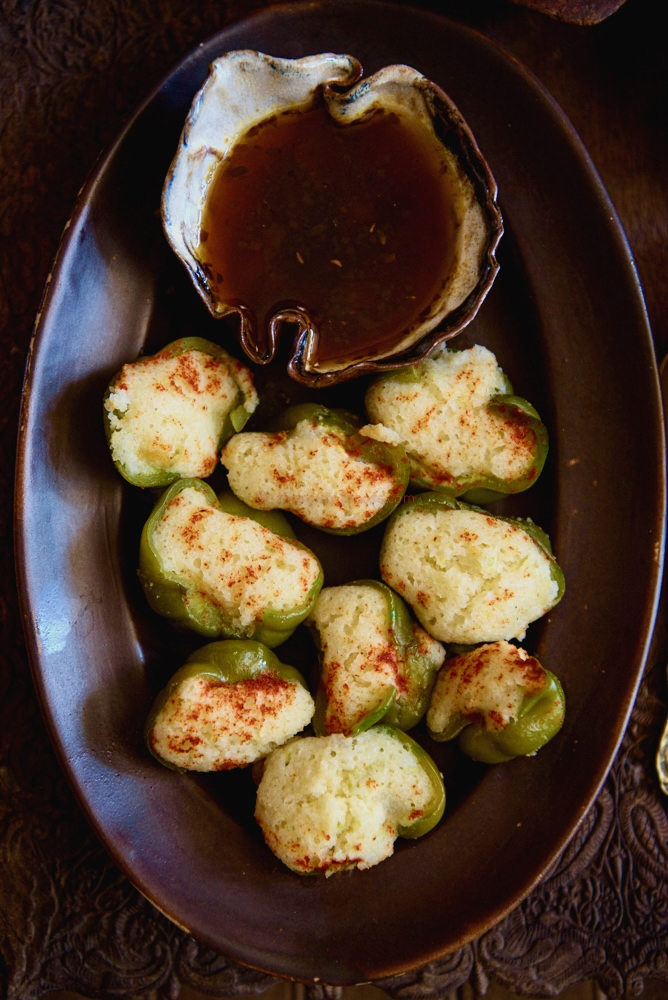
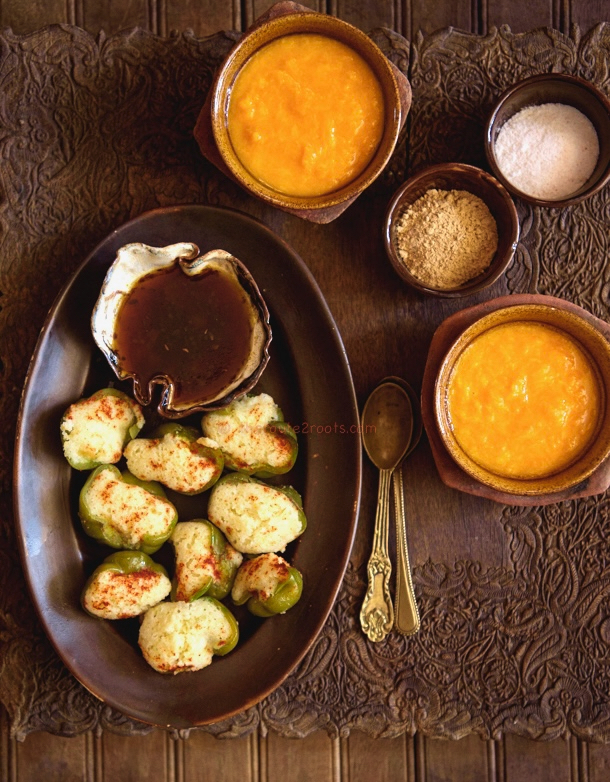
Marcha ma Dhokla
Ingredients
- 12-13 very small capsicums
- 3 cups idra/khatta dhokla or pila-dhokla batter
- 1/4 teaspoon soda-bi-carb
- 1/4 teaspoon salt
- 1 tablespoon oil
- red chilli powder or black pepper powder
Instructions
Wash and wipe-dry the capsicums.
Simultaneously, heat the water and prepare the steamer.
In a finger bowl prepare a mix of salt, soda-bi-carb and 2 teaspoon oil.
Ensure that the fermented dhokla batter is ready (if it has been in the fridge bring it to room temperature).
Cut the capsicums in half (vertically), carefully remove the stem and seeds. Take care not to tear the capsicums of else the batter will flow out.
Apply the prepared oil mix in the inside and outside of the capsicum shells.
Once the water in the steamer comes to a boil, arrange the prepared shells on the steamer plate, make sure they are properly seated on the steamer plate.
Add a pinch of soda-bi-carb to the dhokla batter, stir well and pour it in to the shells. Once all the shells have been filled up, sprinkle the red-chilli or pepper powder over the batter, shut the steamer and steam for 8-10 minutes on medium to high flame. The dhokla are done when they are firm to touch in the centre.
Turn off the flame allow the steamer to rest for a minute or two, brush the dhokla tops with oil and serve as snack or as part of the meal.
Notes
I have not shared the dhokla batter recipe as it can be found here on the blog. The steamer will not accommodate all the dhokla shells at the same time, so work in batches. Smear the paste on only half the shells at one go. The required batter is approximate quantity as the required batter will depend on the size of the capsicum shells.


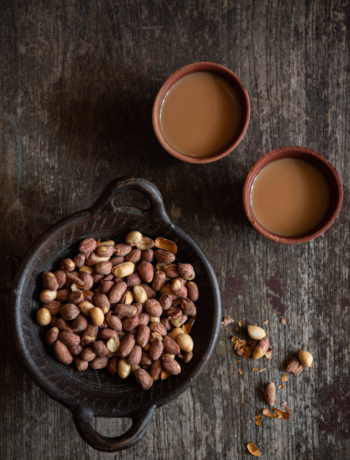
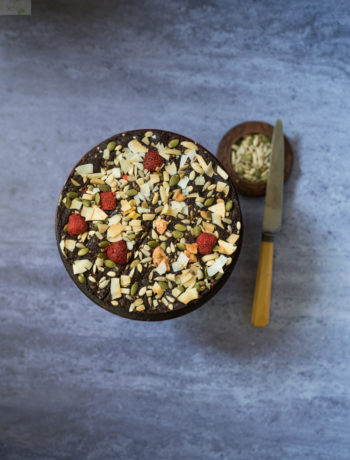
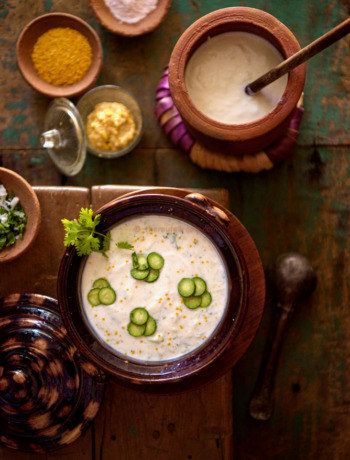
No Comments